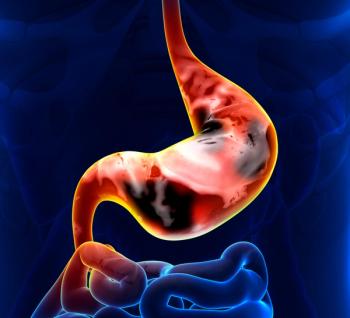
Nivolumab/Relatlimab Shows Feasibility in Resectable NSCLC
The NEOpredict-Lung trial met its primary end point with nivolumab plus relatlimab for patients with resectable non–small cell lung cancer.
Using neoadjuvant nivolumab (Opdivo) plus relatlimab yielded efficacy and safety for patients with resectable non–small cell lung cancer (NSCLC) prior to surgery, according to results from the phase 2 NEOpredict-Lung trial (NCT04205552).
Nivolumab monotherapy produced a major pathological response rate of 27% and an objective radiographic response in 10%, with corresponding values of 30% and 27% in the nivolumab plus relatlimab combination arm. Pathological complete resection of tumors and lymph nodes occurred in 100% of patients in the monotherapy arm and 90% in the combination arm.
“NEOpredict-Lung aims to establish the feasibility of combining the PD-1 blocking antibody, nivolumab, and the LAG-3 blocking antibody, relatlimab, in preoperative treatment of [patients with] NSCLC,” the study authors wrote. “When the study was conceived and initiated this ICI combination was still in clinical development. Therefore, patients were [randomly assigned] to nivolumab with or without relatlimab, with monotherapy serving as a reference for safety, feasibility, efficacy, and exploratory endpoints.”
A total of 60 patients were enrolled between March 2020 and July 2022. Patients in the monotherapy arm were given 240 mg of nivolumab, and in the combination arm, nivolumab was given at 240 mg plus 80 mg of relatlimab. Overall, 100% of patients continued to surgery within the prespecified time frame.
The primary end point was met, which included the feasibility of surgery within 43 days. The screening period was 28 days, and the treatment period was up to 42 days. This outcome confirmed the possibility of using preoperative immune checkpoint inhibitor treatment in this population. The secondary end point included the radiographic response to immunotherapy right before surgery. No complete radiographic responses occurred.
Patients with pathological responses of less than 50% occurred in 60% and 72% for those with resected tumors and lymph nodes, respectively. For those with PD-L1–positive tumors, deeper pathological responses were observed.
A total of 95% of patients experienced complete surgical resection. Of note, 1 patient had R1 resection, 2 patients had pleural carcinosis, and 1 patient had a single small bone metastasis during preoperative hospitalization. Between both arms, 30 patients received standard-of-care postoperative chemotherapy, and 30 did not have any further adjuvant treatment.
The median duration of follow-up was 12 months, and the disease-free survival and overall survival rates at this time point, respectively, were 89% and 93% in the monotherapy arm and 93% and 100% in the combination arm. Of those who have achieved major pathological response, no one has relapsed, but 1 patient died from a pulmonary embolism during extended follow-up.
During treatment, 92% of patients experienced at least 1 adverse effect (AE). The most common included mild to moderate respiratory symptoms, thyroid dysfunction abnormalities, gastrointestinal symptoms, fatigue, laboratory abnormalities, and musculoskeletal symptoms.
In the monotherapy arm, 30% of patients had serious AEs compared with 33% in the combination arm. Treatment-emergent AEs occurred in 53% vs 63%, respectively. The most common immune-related AEs were hyperthyroidism and hypothyroidism. The monotherapy and combination arms had 2 cases of pneumonitis each.
During preoperative immunotherapy, no patient died. The 90-day postoperative mortality rate was 3%. During follow-up, 2 patients died in the monotherapy arm. These included 1 patient having acute pulmonary embolism 62 days after the first dose of nivolumab, and 1 patient having cryptogenic liver failure 103 days after the study treatment. Investigators could not exclude the relation of these events to nivolumab.
Reference
Schuler M, Cuppens K, Plönes T, et al. Neoadjuvant nivolumab with or without relatlimab in resectable non-small-cell lung cancer: a randomized phase 2 trial. Nat Med. Published online April 30, 2024. doi:10.1038/s41591-024-02965-0
Newsletter
Stay up to date on recent advances in the multidisciplinary approach to cancer.






























































































